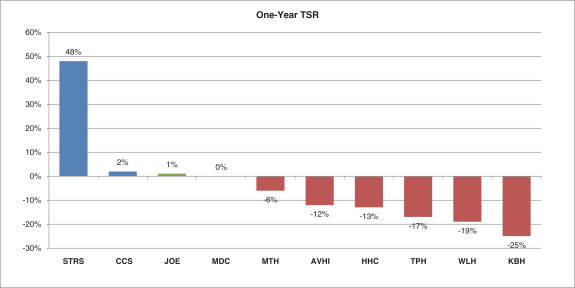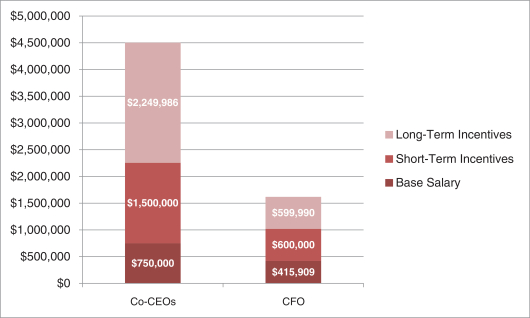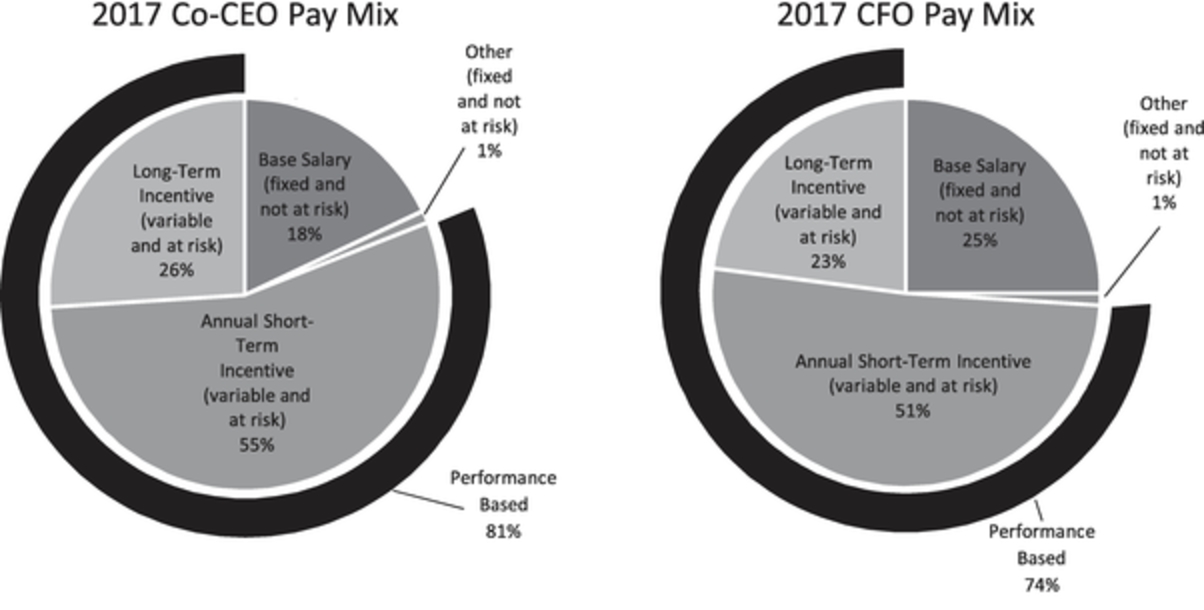Who Can Vote, Outstanding SharesGENERAL INFORMATION ABOUT THE ANNUAL MEETING AND VOTING
Record holders of our common stock asWhen and where will the Annual Meeting be held?
The Annual Meeting will be held on Wednesday, May 9, 2018, at 1:00 p.m. local time, at the Hyatt Regency Denver Tech Center located at 7800 East Tufts Avenue, Denver, Colorado 80237.
What are the purposes of the closeAnnual Meeting?
The purposes of business on March 28, 2016, the record date for the Annual Meeting are entitled to vote on the following items described in this Proxy Statement:
Proposal No. 1 | Election of Directors |
Proposal No. 2 | Ratification of Appointment of Independent Registered Public Accounting Firm |
Proposal No. 3 | Advisory Vote on Executive Compensation |
Proposal No. 4 | Advisory Vote on the Frequency of Future Advisory Votes on Executive Compensation |
Are there any matters to be voted on at the Annual Meeting on all matters to be voted upon. As of the record date, there were 21,126,214 shares of our common stock outstanding, each entitled to one vote.
Voting of Shares
You may vote by attending the Annual Meeting and votingthat are not included in person or you may vote by submitting a proxy. The method of voting by proxy differs (1) depending on whether you are viewing this Proxy Statement on the Internet or receiving a paper copy, and (2) for shares held as a record holder and shares held in “street name.” If you hold your sharesStatement?
We currently are not aware of common stock as a record holder and you are viewing this Proxy Statement on the Internet, you may vote by submitting a proxy over the Internet by following the instructions on the website referred to in the Notice previously mailed to you. If you hold your shares of common stock as a record holder and you are reviewing a paper copy of this Proxy Statement, you may vote your shares by completing, dating and signing the proxy cardany business that was included with the Proxy Statement and promptly returning it, or by submitting a proxy over the Internet or by telephone by following the instructions on the proxy card. If you hold your shares of common stock in street name, which means that your shares are held of record by a broker, bank or other nominee, you will receive a notice from your broker, bank or other nominee that includes instructions on how to vote your shares. Your broker, bank or other nominee will allow you to deliver your voting instructions over the Internet and may also permit you to vote by telephone. In addition, you may request paper copies of the Proxy Statement and proxy card from your broker by following the instructions on the notice provided by your broker.
The Internet and telephone voting facilities will close at 11:59 p.m. EDT on May 10, 2016. If you vote through the Internet, you should be aware that you may incur costs to access the Internet, such as usage charges from telephone companies or Internet service providers and that these costs must be borne by you. If you vote over the Internet or by telephone, then you need not return a written proxy card by mail.
YOUR VOTE IS VERY IMPORTANT. You should submit your proxy even if you plan to attend the Annual Meeting. If you properly give your proxy and submit it to us in time to vote, one of the individuals named as your proxy will vote your shares as you have directed. Any stockholder attending the Annual Meeting may vote in person even if he or she previously submitted a proxy.
All shares entitled to vote and represented by properly submitted proxies (including those submitted electronically, telephonically and in writing) received before the polls are closedpresented at the Annual Meeting and not revoked or superseded, will be voted at the Annual Meetingother than as described in accordance with the instructions indicated on those proxies.this Proxy Statement. If, no direction is indicated on a proxy, your shares will be voted as follows:FOR each of the five (5) nominees for director named in the Proxy Statement, andFOR the ratification of the appointment of Ernst & Young LLP as our independent registered public accounting firm for the fiscal year ending December 31, 2016. With respect tohowever, any other matter thatis properly comes beforebrought at the Annual Meeting, or any continuation, postponement or adjournment thereof, the proxy-holders will vote as recommended by our Board, or if no recommendation is given, in their own discretion.
Revocation of Proxy
If you are a stockholder of record, you may revoke your proxy at any time beforeincludes discretionary authority on the part of the individuals appointed to vote your proxy is votedshares or act on those matters in accordance with their best judgment.
Who can attend the Annual Meeting?
All of our stockholders entitled to vote at the Annual Meeting by taking any of the following actions:
delivering to our corporate secretary a signed written notice of revocation, bearing a date later than the date of the proxy, stating that the proxy is revoked;
signing and delivering a new proxy card, relating to the same shares and bearing a later date than the original proxy card;
submitting another proxy over the Internet or by telephone (your latest Internet or telephone voting instructions are followed); or
attendingmay attend the Annual Meeting and voting in person, although attendance at the Annual Meeting will not, by itself, revoke a proxy.
Written notices of revocation and other communications with respect to the revocation of Company proxies should be addressed to:
Century Communities, Inc.
8390 East Crescent Parkway, Suite 650
Greenwood Village, Colorado 80111
Attention: Corporate Secretary
Meeting. If your shares are held in “streetstreet name,” however, you may change yournot vote by submitting new voting instructions to your broker, bank or other nominee. You must contact your broker, bank or other nominee to find out how to do so. See below regarding how to vote in person if your shares are held in street name.
Voting in Person
If you plan to attend the Annual Meeting and wish to vote in person you will be given a ballot at the Annual Meeting. Please note, however, that if your shares are held in “street name,” which means your shares are held of record by a broker, bank or other nominee, and you wish to vote at the Annual Meeting unless you must bring to the Annual Meetingobtain a legal proxy from the record holder of the shares, which is the broker or other nominee, authorizing you to vote at the Annual Meeting.your shares.
Stockholders who wish to attend the Annual Meeting will be required to present verification of ownership of our common stock, such as a bank or brokerage firm account statement, and will be required to present a valid government-issued picture identification, such as a driver’s license or passport, to gain admittance to the Annual Meeting. No cameras, recording equipment, electronic devices, large bags, briefcases or packages will be permitted in the Annual Meeting.
Quorum and Votes RequiredWho is entitled to vote at the Annual Meeting?
The inspectorHolders of elections appointed forrecord of shares of our common stock, $0.01 par value, as of the close of business on March 15, 2018, the record date, will be entitled to notice of and to vote at the Annual Meeting will tabulate votes cast by proxyand any continuation, postponement or in personadjournment thereof. At the close of business on the record date, there were 29,644,097 shares of our common stock issued and outstanding and entitled to vote. Each share of our common stock is entitled to one vote on any matter presented to stockholders at the Annual Meeting. The inspector of elections will also determine whether a
How many shares must be present to hold the Annual Meeting?
A quorum is present. In order to constitute a quorum for the conduct of businessmust be present at the Annual Meeting for any business to be conducted. The presence at the Annual Meeting, in person or by proxy, of the holders of a majority in voting power of allour capital stock issued and outstanding and entitled to vote on the record date will constitute a quorum. Your shares will be counted toward the quorum if you submit a proxy or vote at the Annual Meeting. Shares represented by proxies marked “abstain” and “broker non-votes” also are counted in determining whether a quorum is present.
What if a quorum is not present at the Annual Meeting?
If a quorum is not present or represented at the scheduled time of the sharesAnnual Meeting, (i) the chairperson of the stockAnnual Meeting or (ii) a majority in voting power of the stockholders entitled to vote at the Annual Meeting, must be present in person or represented by proxy, atmay adjourn the Annual Meeting. SharesMeeting until a quorum is present or represented.














 John P. Box
John P. Box


